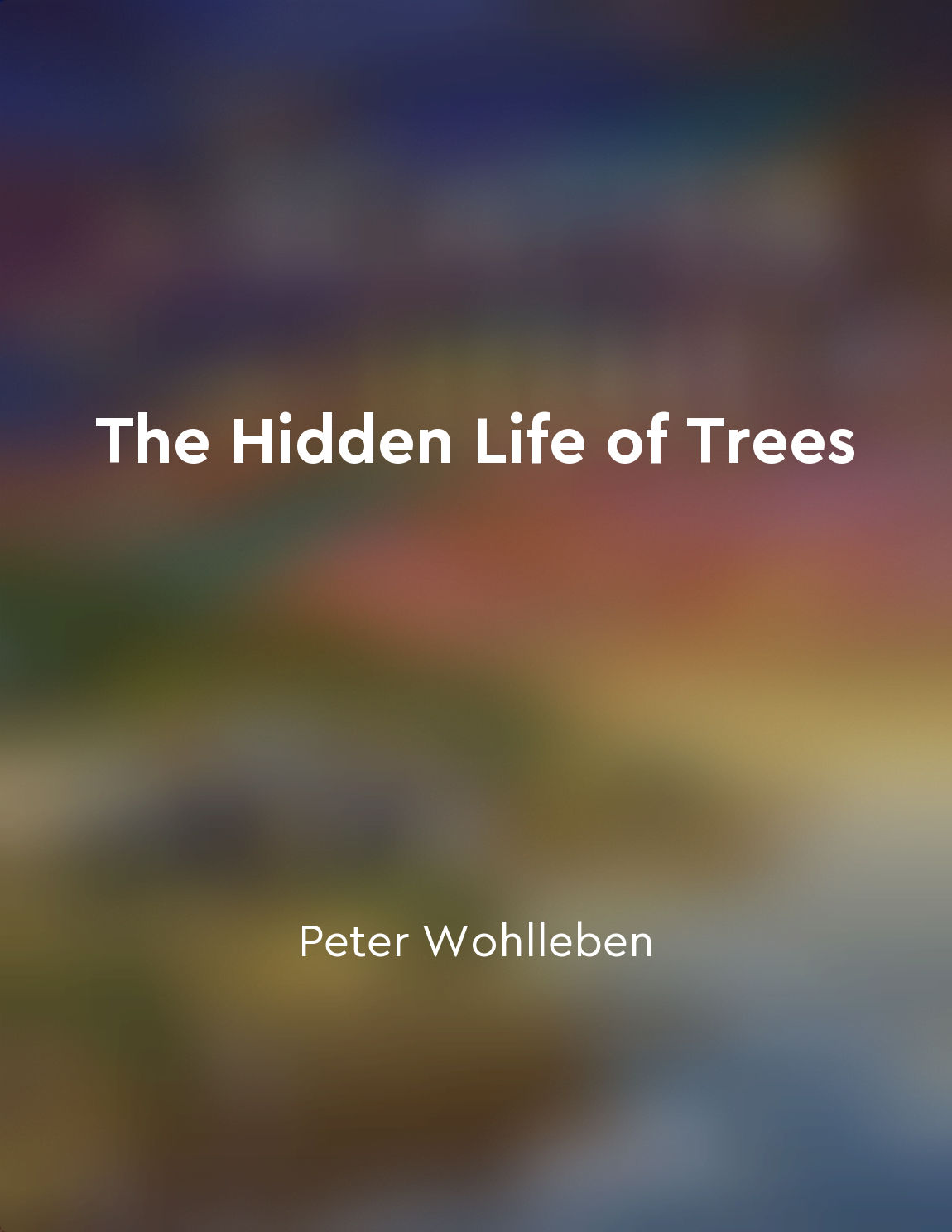Trees communicate through a complex underground network from "summary" of The Hidden Life of Trees by Peter Wohlleben
Imagine a forest, a bustling community of trees all standing tall and proud, soaking up the sunlight filtering through the leaves above. But what if I told you that beneath the surface, hidden from view, there exists a world just as vibrant and active as the one above ground? This is the secret life of trees, a world where communication is not carried out through words or gestures, but through a complex underground network that binds the trees together in ways we are only just beginning to understand. In this hidden world, trees are connected through a vast web of fungal mycelium that weaves its way through the soil, linking tree roots in an intricate network of communication. Through this network, trees can share resources, such as water and nutrients, with one another, ensuring that each tree in the forest has access to what it needs to thrive. But the connections go beyond mere resource-sharing - trees can also send chemical signals through the fungal network to warn their neighbors of potential threats, such as insect infestations or disease. This underground communication system allows trees to form alliances, pooling their resources and working together to ensure the health and vitality of the entire forest. For example, older, more established trees can support younger, weaker trees by sending them nutrients through the fungal network, helping them to grow and survive in challenging conditions. In this way, the forest functions as a cohesive community, with trees looking out for one another and working together towards a common goal. But the benefits of this underground network extend beyond the individual trees in the forest - they also play a crucial role in maintaining the health of the entire ecosystem. By sharing resources and information through the fungal network, trees can respond more effectively to environmental changes and disturbances, such as droughts or storms, helping the forest as a whole to adapt and thrive in a changing world. So the next time you find yourself walking through a forest, take a moment to pause and consider the hidden world beneath your feet, where trees communicate and cooperate through a complex underground network that binds them together in ways we are only just beginning to unravel. It is a world of connection and collaboration, where trees work together to support one another and ensure the health and vitality of the entire forest.Similar Posts
We must rethink our relationship with the natural world
Our current way of living is unsustainable because we have disconnected ourselves from the natural world. We have exploited and...
Trees have a capacity for healing that goes beyond their physical presence
The deep roots of trees connect them to each other in an intricate network of communication, support, and healing. They have th...

Trees provide essential ecosystem services
Trees are not just living things that stand tall and provide shade. They are essential players in the intricate web of life tha...

The wellbeing of trees is linked to our own survival
The deep forests are not just a collection of trees standing next to one another, but a complex network of interconnected being...
Forests are complex ecosystems that support life
Forests are not just a collection of trees, they are complex ecosystems that support a vast array of life. From the tiniest ins...

The value of forests goes beyond monetary measurements
Forests are not just collections of trees standing in isolation. They are complex ecosystems teeming with life, interconnected ...
The canopy is a delicate ecosystem that must be protected
High in the sky, above the forest floor, lies a world unlike any other. The canopy, a complex and fragile ecosystem, teems with...

Their interconnectedness is essential for survival
In the forest, trees are not loners. They are part of a community, a network of interconnected individuals that rely on one ano...
